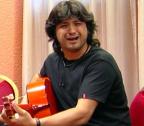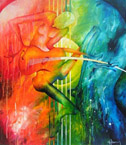Welcome to one of the most active flamenco sites on the Internet. Guests can read most posts but if you want to participate click here to register.
This site is dedicated to the memory of Paco de Lucía, Ron Mitchell, Guy Williams, Linda Elvira, Philip John Lee, Craig Eros, Ben Woods, David Serva and Tom Blackshear who went ahead of us.
We receive 12,200 visitors a month from 200 countries and 1.7 million page impressions a year. To advertise on this site please contact us.
|

|
|
guitar solos as structured compositions...?
|
You are logged in as Guest
|
|
Users viewing this topic: none
|
|
Login  | |
|

   
Steelhead
Posts: 89
Joined: Nov. 20 2014

|
 guitar solos as structured compositi... guitar solos as structured compositi...
|
|
|
Estimated compañeros,
I'm wondering if you can corroborate my understanding of guitar solos. It seems to me that before Paco (and for many ppl even after), the "guitar solo," whether recorded or performed, is basically a more or less random series of falsetas, any one of which can be detached and performed separately. E.g., for "Flamenco Puro," Sabicas strings together one set of bulerias falsetas and calls it "Aires de Triana." Then for another LP, another set, with a different name, but he or anyone might play any of those falsetas independently, and in concert he would not necessarily play these "pieces" the same way. (Or would he?) By contrast, there are the solos that are precomposed, and the guitarist does play it the same way in concert--from Escudero's "Impetu" to any PdL item. However, I might opine that most of these PdL items are not necessarily structured entities, with some sort of closure and thematic continuity, as opposed, for example, to Vicente's "Morente," whose opening theme recurs at the end. Is that an accurate way of seeing things?
_____________________________
Steelhead
|
|
|
|
REPORT THIS POST AS INAPPROPRIATE |
Date Jul. 12 2020 20:20:33
 |
|

   
Ricardo
Posts: 14797
Joined: Dec. 14 2004
From: Washington DC

|
 RE: guitar solos as structured compo... (in reply to Steelhead) RE: guitar solos as structured compo... (in reply to Steelhead)
|
|
|
quote:
ORIGINAL: Steelhead
Estimated compañeros,
I'm wondering if you can corroborate my understanding of guitar solos. It seems to me that before Paco (and for many ppl even after), the "guitar solo," whether recorded or performed, is basically a more or less random series of falsetas, any one of which can be detached and performed separately. E.g., for "Flamenco Puro," Sabicas strings together one set of bulerias falsetas and calls it "Aires de Triana." Then for another LP, another set, with a different name, but he or anyone might play any of those falsetas independently, and in concert he would not necessarily play these "pieces" the same way. (Or would he?) By contrast, there are the solos that are precomposed, and the guitarist does play it the same way in concert--from Escudero's "Impetu" to any PdL item. However, I might opine that most of these PdL items are not necessarily structured entities, with some sort of closure and thematic continuity, as opposed, for example, to Vicente's "Morente," whose opening theme recurs at the end. Is that an accurate way of seeing things?
Everything you notice is correct but except for one thing. “Before paco” is not correct. It’s always been a mixture depending on the individual. You admitted Impetu by escudero which perhaps influenced young paco, but ignore some other examples. Ramon montoya recorded the first solo collection in 1937 and you can see “Rondeña” is a composition that became a model for a new form that didn’t exist before. Unlike his other pieces, that one he played the exact same way on a different recording (minus one falseta). So it goes back to the start. I believe “Minera” has two takes almost identical as well.
Anyway if you want a clear division, I would point to Manolo Sanlucar Tauromagia, and other works, where he uses the forms as a base for falsetas whose arrangement is set in a specific unchanging order. And by contrast any random modern player will still be doing the opposite which is improvised series of falsetas.
_____________________________
CD's and transcriptions available here:
www.ricardomarlow.com
|
|
|
|
REPORT THIS POST AS INAPPROPRIATE |
Date Jul. 13 2020 15:44:45
 |
|
 New Messages New Messages |
 No New Messages No New Messages |
 Hot Topic w/ New Messages Hot Topic w/ New Messages |
 Hot Topic w/o New Messages Hot Topic w/o New Messages |
 Locked w/ New Messages Locked w/ New Messages |
 Locked w/o New Messages Locked w/o New Messages |
|
 Post New Thread
Post New Thread
 Reply to Message
Reply to Message
 Post New Poll
Post New Poll
 Submit Vote
Submit Vote
 Delete My Own Post
Delete My Own Post
 Delete My Own Thread
Delete My Own Thread
 Rate Posts
Rate Posts
|
|
|
Forum Software powered by ASP Playground Advanced Edition 2.0.5
Copyright © 2000 - 2003 ASPPlayground.NET |
7.788086E-02 secs.
|


 Printable Version
Printable Version









 New Messages
New Messages No New Messages
No New Messages Hot Topic w/ New Messages
Hot Topic w/ New Messages Hot Topic w/o New Messages
Hot Topic w/o New Messages Locked w/ New Messages
Locked w/ New Messages Locked w/o New Messages
Locked w/o New Messages Post New Thread
Post New Thread